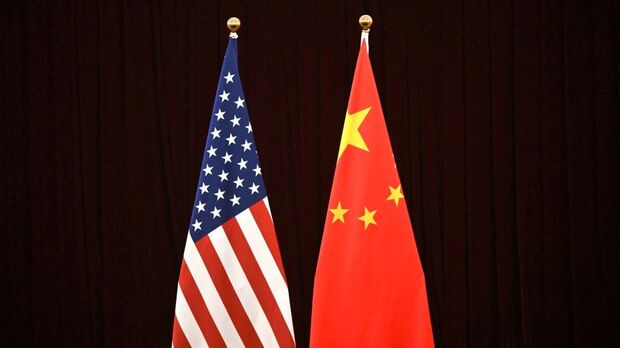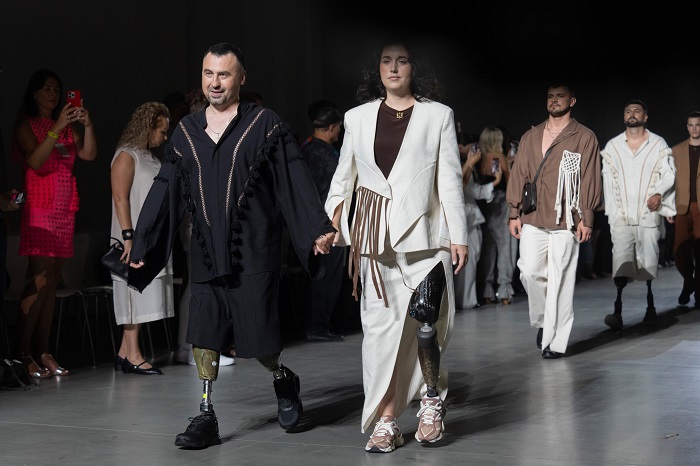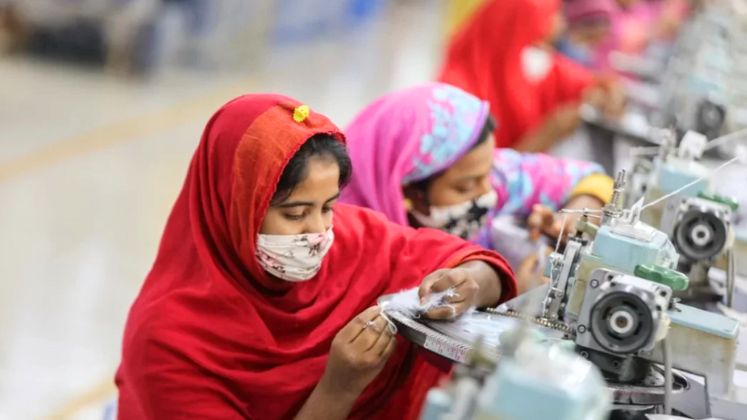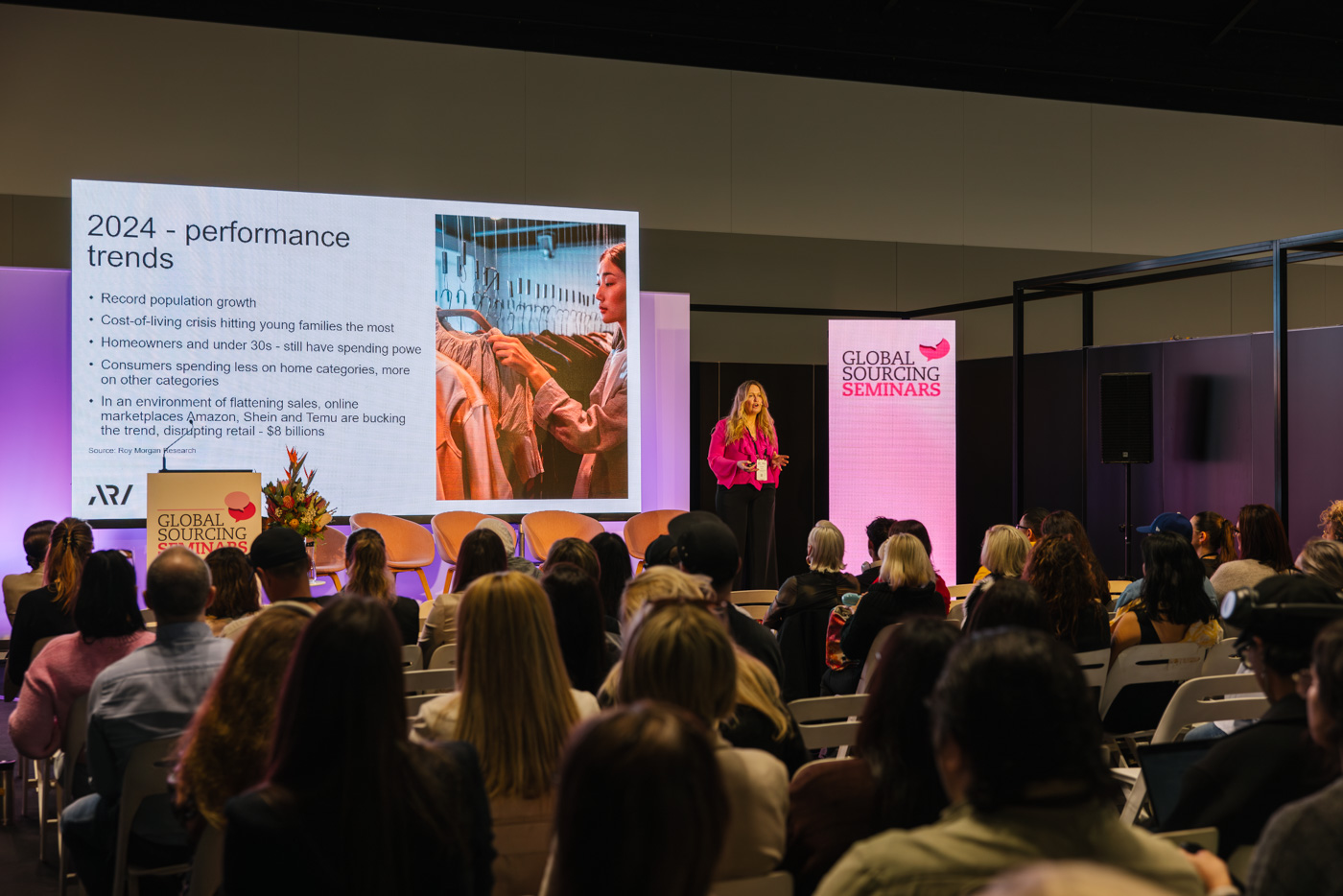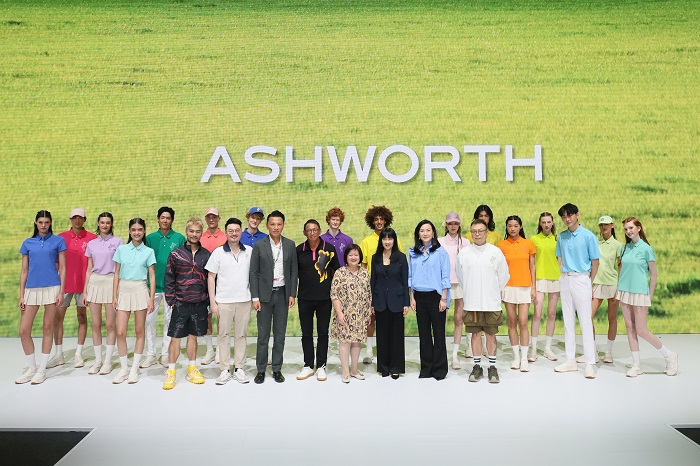FW
Ethiopia's export earnings from textiles have been growing. In spite of yearly growth, however, the revenue earning from the textile sector is very small compared to the target.
Germany, Turkey and China are the leading destinations for Ethiopian textile products. Garment, yarn and fabrics are at the top in revenue generators. The highest performance level of the factories in the textile industry is only 60 per cent of their potential. Factories which are involved in garment production are performing lower than 40 per cent.
Strengthening capacity of industries and addressing shortage of raw material are among the priorities to be carried out this year. Increasing plot of land used to cultivate cotton is another area the country is working to address this challenge and meet the increasing demand. Currently cotton is being cultivated on more than 1,25,000 hectares of land.
Ethiopia's textile manufacturing industry embraces both medium and large public and private enterprises. Their main activities include spinning, fabric formulation, dyeing, finishing and sewing. The textile sector mainly produces 100 per cent cotton textiles. Each enterprise produces one product range, such as cotton yarn, cotton fabrics, bed sheets, blanket, knitwear etc. All the cotton yarn in the Ethiopian market is supplied to the local handlooms.
Investment in Tunisia's textile and garment industry has declined by 4.5 per cent on a year-on-year basis. Since the beginning of 2014, chemical industry has had an investment growth of 10.6 per cent. Except that investments on other main industrial fields have all decreased. Investment in the shoes and leather industry has declined by 10 per cent. Machinery industrial investment has declined by 7.4 per cent. While that in the apparel and textile industry has decreased by 4.5 per cent.
In addition, foreign investments of joint ventures in Tunisia have decreased from 41.9 per cent in 2013. However, investments by exclusively foreign-owned enterprises have increased.
Tunisia is among the top 15 garment suppliers in the world, and has the advantage of being close to the European market. It is the fifth largest supplier to the European Union as well as the leading trouser supplier to the EU. Other important products are work wear and lingerie. The main foreign investors in the apparel sector in Tunisia are France, Germany, Belgium and Italy.
Tunisia enjoys several comparative advantages such as low labor cost. The average cost per operator hour in the Tunisian industry is significantly lower than in Morocco and Turkey.The country has centers for specialised education covering the textile industries, sectorial centers for training supervisors and technicians, a higher institute of textiles for senior technicians and a higher institute for fashion professionals.
ITMA Europe will be held November 12 to 19, 2015, Milan, Italy.
This is a textile and garment machinery exhibition. The last ITMA in Italy took place in 1995. For the first time in its history, ITMA will take place in November. ITMA in Europe plays a very important role in the global textile machinery industry.
Several CEMATEX countries have increased their space booked for the 2015 show compared with the 2011 event including Italy, the Netherlands, France and Germany. CEMATEX is the European association of textile machinery manufacturers.
The top five countries in terms of number of applicants are Italy, Germany, India, China and Turkey. Turkey is not only a textile manufacturing country but a machinery producer.
ITMA 2015 will see more participation from the industry as the world moves towards sustainability, spawning cutting-edge research and development, technological innovations and a host of enhanced and new machinery, and other product offerings.
The top five sectors participating at ITMA are finishing, spinning, weaving, knitting and printing. However, since ITMA 1999, emphasis has shifted to nonwovens, fibers and yarns, and garment making. Technical textile solutions, which have formed an integral part of the offerings by technology providers at ITMA, will be further highlighted with displays of new applications.
www.itma.com/
Myanmar is taking the idea of social compliance very seriously. Garment factories are being supported in their efforts to establish sustainable company policies for good workplace conditions.
Garment factories are being trained to increase their compliance level with international social and environmental standards. The aim is to enhance the competitiveness of Myanmar garment factories and enable them to gain access to EU markets.
A group of ten Myanmar garment manufacturers has been selected as being compliant with the standards of the European market. The selection process was based on the orientation towards the EU market and the interest to improve social compliance. The training package aims at improving the working conditions in Myanmar factories, thereby increasing the productivity and product quality.
The training package was launched September 29, 2014, and will continue until February 2015, comprising group training sessions, in-factory consultancies and a final workshop for the interested public to present the experiences gained by the factories.
Myanmar has a long history of making yarn, fabric and garment. The EU’s inclusion of Myanmar in its Generalized Scheme of Preferences( GSP) allows Myanmar garments and footwear unfettered access to the world’s largest market. The EU imposes no quotas or tariffs on goods made in Myanmar except for weapons and ammunition
International clothing retailer Esprit has once again partnered with Hong Kong-based NGO Redress for its recycled textiles collection, developed using the company’s pre-consumer textile waste.The Recycled Collection has been verified by Redress’ R-Cert standard.
A QR code on the garment’s hangtag can be scanned by consumers to track the clothing’s journey from factory to retail and also for more information on the recycling process and environmental savings.
The eight denim styles were created using 43 per cent recycled denim. There was a 37 per cent savings in greenhouse gases, 19 per cent savings in water and a 17 per cent savings in electricity use per garment.Five jersey styles were created using 35 per cent recycled textiles. There was 37 per cent savings in greenhouse gases, 74 per cent savings in water and 18 per cent savings in electricity use per garment.
The R-Cert injects clarity for consumers about the recycling process and enhances consumers’ knowledge and appetite for recycled textile clothing. More brands are showing interest in using recycled fibers in their collections. R-Cert ensures that brands recycle a minimum of 20 per cent recycled fibers in a traceable supply chain.It guarantees brands recycle their own factory fresh textile waste into their own recycled textile clothing.
Vastra 2014 will take place in Rajasthan, October 29 to 31.This is a fair intended to promote textile exports and investments, with a focus on Rajasthan. The event is designed basically on a B2B format where buyers and exhibitors explore new business opportunities.
About 300 foreign buyers and 75 Indian buying houses or agents have been targeted in this regard. Of the 300 foreign buyers, 200 of them are from 57 countries including Australia, Latin America and CIS countries.
Around 35 Indian buying houses have confirmed their participation. Seven states - Gujarat, Karnataka, Andhra Pradesh, Bihar, Jharkhand, and Haryana– will be represented.Exhibitors would showcase yarn, fabric, apparel, accessories, home textiles and technical textiles.
Vastra is fast emerging as a platform for textile industries all over the world. Last year the event generated a business of Rs.75 crores. This year a target of Rs150 crores to Rs.200 crores has been set.
The show showcases the best and the latest in textiles from fiber to fashion, be it technology or products. It is designed to provide opportunities for launching new products, exploring avenues forstrategic alliances and partnerships worldwide as also new locations for setting up businesses in India. It also provides a platform for disseminating technology, interaction with experts and R&D labs for solution in technology and latest trends.
tradeshows.tradeindia.com/vastra2014/
Pitti is one of the world's most important platforms for men's clothing and accessory collections and for launching new projects in men's fashion. PittiImmagine organizes some of the world’s most important fashion and lifestyle events, international trade fairs showcasing high quality textiles and clothing, communications events and special projects related to the fashion system and its culture in terms of global evolutions in style and taste.
e-pitti is the digital version of some of the trade shows organized by PittiImmagine. Since July 2014 the digital platform had hosted PittiUomo 86, Pitti W 14, Pitti Bimbo 79 and PittiFilati 75 editions and all were recently closed successfully.
The last summer edition of e-pitti closed with a 36 per cent growth of visits compared to 2013 and 3,00,000 page views just on the reserved area. FieraDigitale devised the project and launched it with PittiImmagine in 2011. This is the outcome of work done in collaboration with Pitti in promoting exhibitors within the platform. It is a studied editorial plan to offer users new content throughout the entire period of the online fairs.
Over 1,350 brands from the men’s, women’s, children’s and yarn fairs have joined the project, and more than 8,300 products were displayed in the online stands. Buyers of e-pitti come from all around the globe, especially Italy, Japan, Germany, and South Korea. Buyers navigated more and longer compared to the previous edition: every visit consisted of an average of 24 page views between brand content, collections and products.
www.pittimmagine.com/
Bangladeshi garment traders are keen on doing business in northeast India.The Tripura government is ready to provide logistical support to them including land.
Bangladeshi investors see Tripura as an ideal place for doing business and setting up industries as the northeastern state has surplus power and natural gas.
Tripura will be the second power surplus state in India within the next three or four months after Sikkim, once full generation starts from the Palatana and the Monarchak gas-based power plants.
The power generation from the first unit (363 mw) of the Rs 9000 crorePalatana power plant began December 2013 and the second unit (363 mw) is expected to start generation by November 2014.
The state-owned North East Electric Power Corporation is setting up a 104 mw power project at Monarchak in western Tripura, 70 km south of Agartala, and just eight km from the India-Bangladesh border. The project is likely to start generation within the next three or four months.
The Indian government is committed to supplying 100 mw of power to Bangladesh from the Palatana power plant. Railway services may be resumed from Agartala to Bangladesh.
Tripura is the key area of the export-import trade with Bangladesh in north-east India. While Bangladesh is facing a huge trade deficit with India in the total trade quantum, it emerges a leader in business with north-eastern states.
The euro, pound and yuan weakened against the dollar in September, but other Asian currencies appreciated, impacting business between different economies.
The euro fell by 0.6 per cent against the US dollar in the month, increasing its year-to-date decline to 8.66 per cent. The currency is down by 6.8 per cent compared to the same month last year.
The pound dropped by 2.5 per cent against the dollar in the month, putting it behind by 0.9 per cent on a year-to-date basis, and reducing its year-over-year gain to under 0.2 per cent.
The Indian rupee rose by 1.88 per cent against the dollar in September, tempering its year-to-date slide to 0.8 per cent. Compared to this time last year, the currency is down by almost 1.85 per cent.
The Indonesian rupiah increased by 4.2 per cent in September, resulting in a year-to-date increase of 0.9 per cent and a year-over-year increase of more than five per cent.
The Pakistani rupee rose 0.7 per cent in September, down 3 per cent from the same month last year, and more than 4 per cent for the year-to-date.
The Chinese yuan fell very slightly against the dollar in September and ended the month 0.5 per cent higher for the year so far.
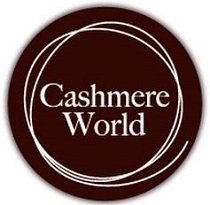 Organised by the China Chamber of Commerce of Foodstuffs and Native Produce (CFNA) and UBM Asia, the third edition of Cashmere World, a trade fair dedicated to cashmere and other fine fibres has ended on a positive note on in Hong Kong. This year, companies from Afghanistan, China, Hong Kong, India, Mongolia, and Thailand and major players from Mongolia have returned to Cashmere World held at the Hong Kong Convention & Exhibition Centre.
Organised by the China Chamber of Commerce of Foodstuffs and Native Produce (CFNA) and UBM Asia, the third edition of Cashmere World, a trade fair dedicated to cashmere and other fine fibres has ended on a positive note on in Hong Kong. This year, companies from Afghanistan, China, Hong Kong, India, Mongolia, and Thailand and major players from Mongolia have returned to Cashmere World held at the Hong Kong Convention & Exhibition Centre.
According to the moderator of the Cashmere World Forum, Alessandra Cocchi, the event has proved itself as a window to the latest information about the industry. Taking into account the wide range of styles, quality, designs and services offered by the trade fair participants, this was certainly the case. Held alongside Fashion Access, Asia’s leading fashion accessories event, Cashmere World’s presentation was quite spectacular with its white carpeted aisles, entrance area and stands. The carpeting enhanced the product selections and reflected the inherent luxury for which cashmere fashion items are famous the world over.
A steady but not overwhelming flow of international buyers kept exhibitors on their toes  and more importantly, it was the professional quality of the buyers that lent even more credibility to this already well-established event. The mix of exhibitors represented the main cashmere producing nations of the world – Afghanistan, China and Mongolia as well as other participants notably from India and Indonesia. Commenting on the buyer response, Indian exhibitor Tarrlochan Singh, Proprietor of Geetanjali International from New Delhi stated, “We made contacts from Mongolia and Italy and have developed clients from past shows. Cashmere World is a business platform and allows the customers to get to know us – and us to know them.”
and more importantly, it was the professional quality of the buyers that lent even more credibility to this already well-established event. The mix of exhibitors represented the main cashmere producing nations of the world – Afghanistan, China and Mongolia as well as other participants notably from India and Indonesia. Commenting on the buyer response, Indian exhibitor Tarrlochan Singh, Proprietor of Geetanjali International from New Delhi stated, “We made contacts from Mongolia and Italy and have developed clients from past shows. Cashmere World is a business platform and allows the customers to get to know us – and us to know them.”
Another Indian exhibitor Parminar Singh, General Manager of Old Village Overseas also from New Delhi displayed a wide range of cashmere fashion scarves. He had about 200 designs on show in both cashmere and blended fibres and after a busy day on the first day and having received visitors from Chile, Spain and Canada, he noted that he will return to Cashmere World next year and will also exhibit at Fashion Access in March 2015.
Even Inna Lee, Sales Manager of Viction (Inner Mongolia) Cashmere Co from Northern China, a returning exhibitor, expressed, “We are satisfied with the fair as it is a dedicated business platform for selling our products internationally”. Katherine Jin, Business Executive of Ningxia St. Edelweiss Cashmere Products Co, also from Inner Mongolia commented, “Hong Kong is an excellent place to meet our international customers as Cashmere World is a focused business platform. We offer contract manufacturing of all types such as cashmere accessories – gloves, hats, scarves, shawls, etc.”
Present for the first time at Cashmere World was the Thailand Textile Institute that was promoting a combined silk and cashmere project funded by the Thai Royal Family. The objective is to reinvigorate the Thai silk industry by combining silk with cashmere imported from Mongolia to create exclusively designed and luxury garments. The Director of the Technology Department, Dr. Chanchai Sirikasemlert noted that most of the promotion for this project has been carried out in Thailand and that Cashmere World was the only international business platform where it has been presented.
What makes Cashmere World unique for the sector is its integral nature. The trade fair is complemented and strengthened by the organisation of the Cashmere World Forum held during the first two days of the fair. The speakers at the forum include international authorities on the subject and this year the keynote address will be delivered by Karl Spilhaus, President of the Cashmere & Camel Hair Manufacturers Institute, USA, on ‘The Development of Objective Methods for the Identification of Cashmere’. Other subjects covered include ‘Branding Fine Fibres: the example of the Mohair Mark’ and ‘Retailing Cashmere: Trends Forecast & Innovation’.



